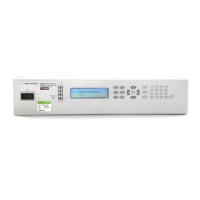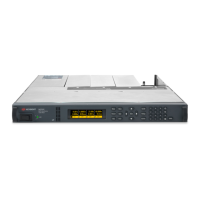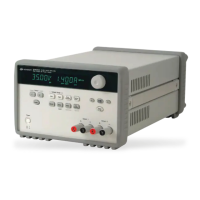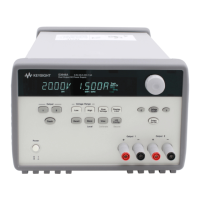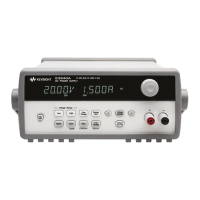*SRE <value>
*SRE?
Service request enable command and query. This sets the value of the Service Request Enable
register. This determines which bits from the Status Byte Register are summed to set the Master
Status Summary (MSS) bit and the Request for Service (RQS) summary bit. A 1 in any Service Request
Enable register bit position enables the corresponding Status Byte register bit. All such enabled bits
are then logically OR-ed to cause the MSS bit of the Status Byte register to be set. Refer to Status
Tutorial for more information.
Parameter Typical Return
A decimal value corresponding to the
binary-weighted sum of the register's bits.
<bitvalue>
Enable bit3 and bit4 in the enable register: *SRE 24
l When a serial poll is conducted in response to SRQ, the RQS bit is cleared, but the MSS bit is not.
When *SRE is cleared (by programming it with 0), the power supply cannot generate an SRQ to the
controller.
*STB?
Status byte query. Reads the Status Byte Register, which contains the status summary bits and the
Output Queue MAV bit. The Status Byte is a read-only register and the bits are not cleared when it is
read. Refer to Status Tutorial for more information.
Parameter Typical Return
(none) <bitvalue>
Read status byte: *STB?
*TRG
Trigger command. Generates a trigger when the trigger subsystem has BUS selected as its source.
The command has the same effect as the Group Execute Trigger (<GET>) command.
Parameter Typical Return
(none) (none)
Generates an immediate trigger: *TRG
*TST?
Self-test query. Performs a instrument self-test. If self-test fails, one or more error messages will
provide additional information. Use SYSTem:ERRor? to read error queue. See SCPI Error Messages
for more information.
6 SCPI Programming Reference
237 Keysight N6900/N7900 Series Operating and Service Guide

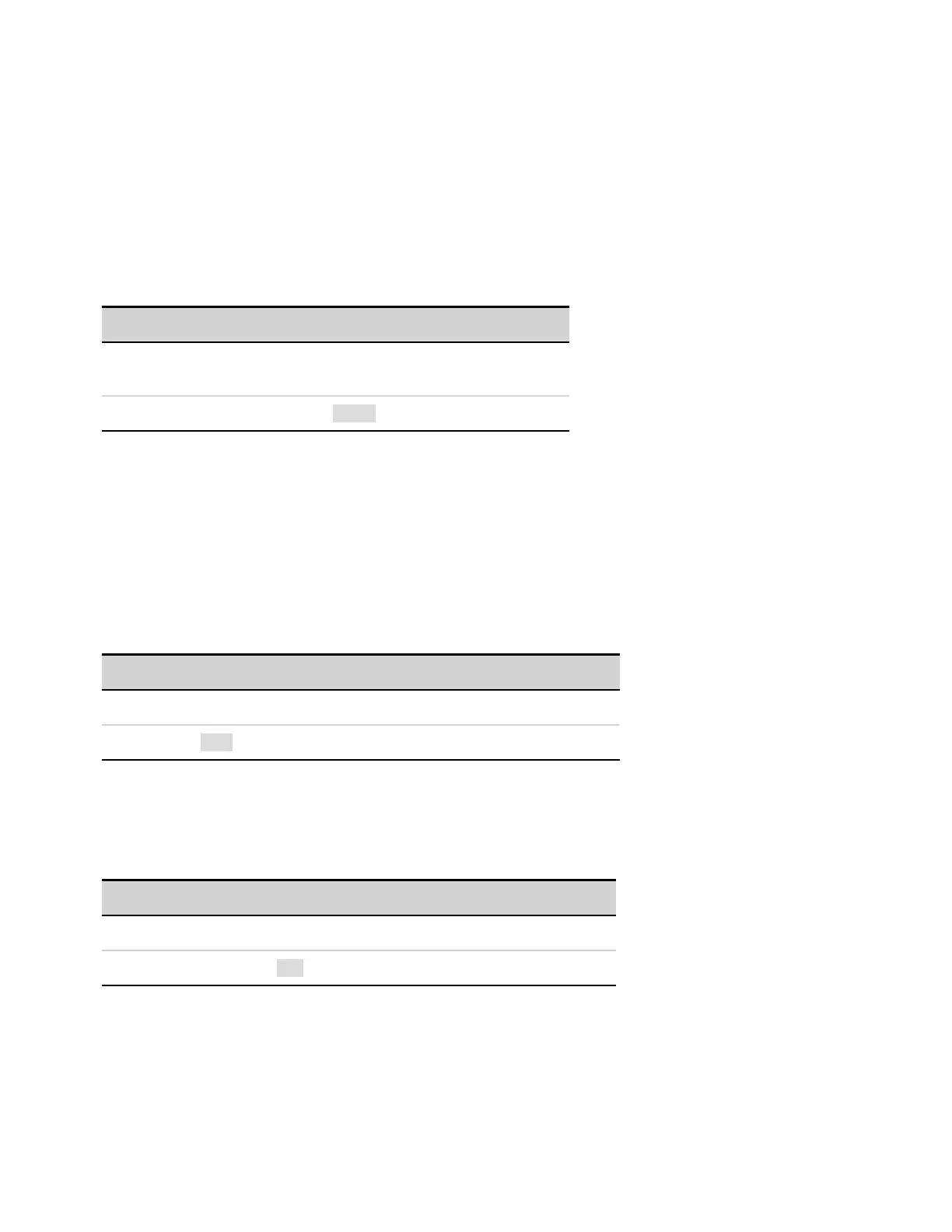